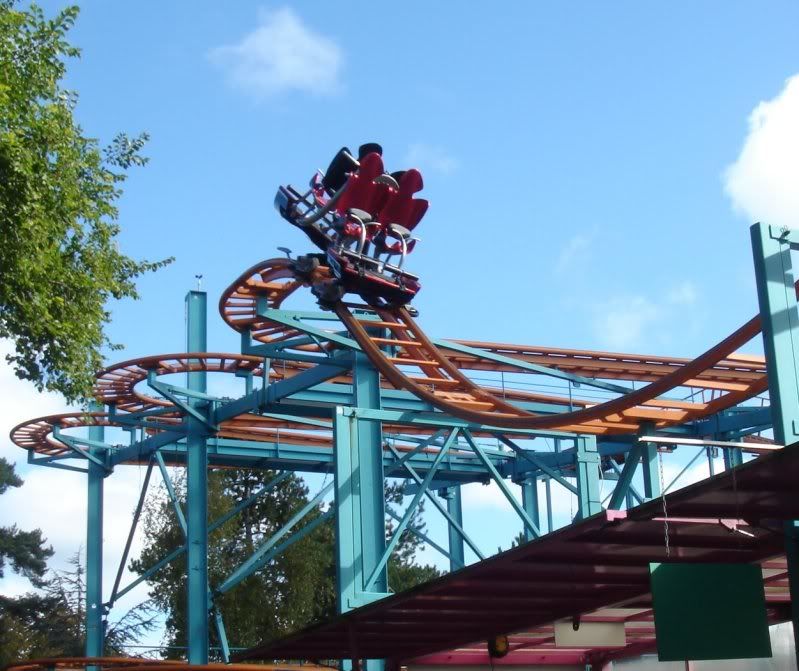gavin said:
Somebody who knows **** about physics needs to come in and correct me, but wouldn't the swinging cancel out the spinning, or vice versa?
I'm just thinking, you spin on these normally because you hit the corners and the weight of the riders pulls the car into a spin, right? If the cars swing, then wouldn't the energy go into that and not into the spinning?
I can try, at least... it's certainly on my curriculum list, but it's kinda hard to explain without figures, especially as I'm not a native speaker of English and it's past 11 in the evening.
It has something to do with the application of force. When you look at the spinning car from above, any force (whose force vector doesn't overlap the car's axis of symmetry) applied to the car, will cause a spin around the "up" axis, unless sufficient friction or another force in the opposite direction cancels it out.
In layman's terms, if you give the car a push, and the direction of your push doesn't go along an axis of symmetry, it will start spinning like a merry-go-round.
When looking at the car from the side, so that the axis of tilt goes straight along with your line of sight, any force applied to the swinging part of the car will cause a spin around the tilt axis of rotation (the hinges), as long as the force vector itself doesn't overlap an axis of symmetry.
Think of it like a church bell, or any pendulum for that matter. Give it a push, and it will start swinging. But if you push (or pull) a part of the bell in the direction of the beam it's suspended from, it won't swing. For instance, the weight of the bell doesn't cause it to swing when it's hanging in equilibrium, because the force vector from its weight goes straight through the axis of symmetry. Tilt it slightly, however, and the force from the weight (G = mg) will now work outside the axis of symmetry, and the bell will start swinging.
Anyway, note that a force can cause both a spin around the axis of rotation (the "merry go-round" axis, in lack of a better word) and the axis of tilt (the "church bell" axis), provided the force vector doesn't go through either center of rotation. Think of it like a bell suspended in the ceiling of a merry go-round, anywhere but in the exact middle. Stand outside the go-round and push the bell, really hard, and the bell will begin swinging while the go-round slowly goes around. If the bell is hanging in the exact middle of the go-round, any force applied to it would go straight along the go-round's axis of symmetry, and the push wouldn't have caused it to spin.
There are also other factors involved - for instance, the spin of the car alone will create a centrifugal force that will cause the car to tilt, and uneven distribution of weight will make a tilted car rotate. but let's keep those out of the picture for now. It's confusing enough as it is.
Did I manage to get my point across?


